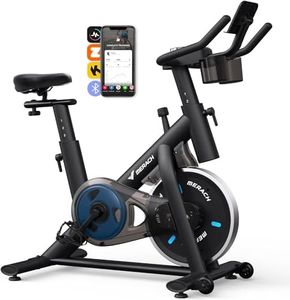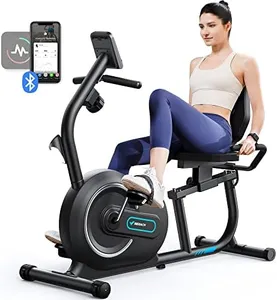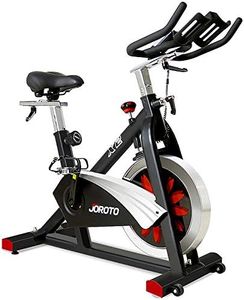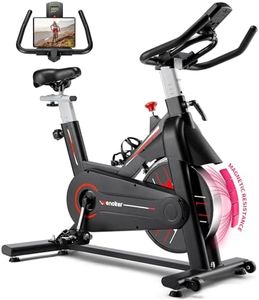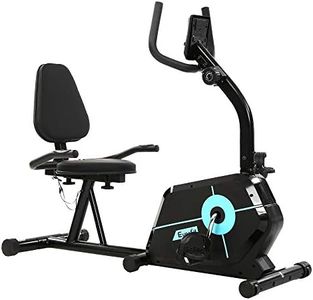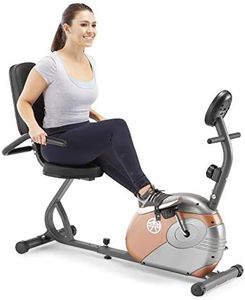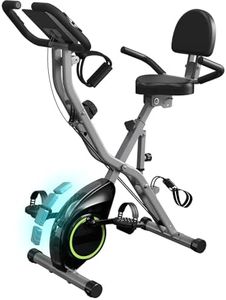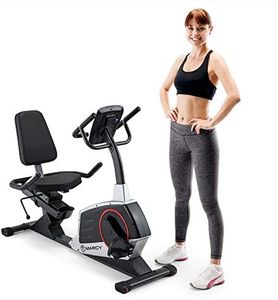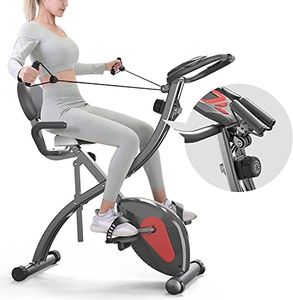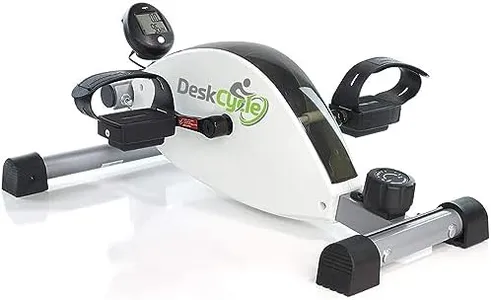We Use CookiesWe use cookies to enhance the security, performance,
functionality and for analytical and promotional activities. By continuing to browse this site you
are agreeing to our privacy policy
10 Best Exercise Bike For Elderly
From leading brands and best sellers available on the web.Buying Guide for the Best Exercise Bike For Elderly
When picking an exercise bike for elderly users, the goal is to find a bike that balances safety, comfort, and effectiveness. This means you should focus on features that make the bike easy to use, stable, and gentle on the joints, while also offering enough adjustability to suit different fitness levels. Take into account the physical capabilities of the user, any mobility or balance issues, and personal comfort preferences to find a good match.Bike Type (Upright vs. Recumbent)The bike type refers to the seating style and posture required when using the exercise bike. Upright bikes resemble traditional bicycles and involve sitting in a more elevated position, while recumbent bikes have a reclined seat with back support. For elderly users, recumbent bikes are usually easier to get on and off, provide better back support, and reduce strain on the hips and knees. Upright bikes may be preferable for those who are more mobile and want a workout that mimics real-life cycling, but for most elderly people, a recumbent bike is the safer, more comfortable option.
Seat Comfort and AdjustabilitySeat comfort and adjustability refer to how cushioned the seat is and how easily its height and position can be modified. A well-padded, wide seat with a supportive backrest is essential for elderly users, as it minimizes pressure points and makes longer sessions comfortable. Easy-to-use seat adjustment mechanisms help to ensure a proper posture without excessive bending or stretching, which is particularly important for anyone with limited flexibility. If possible, choose a model that allows for easy adjustments to both the seat height and its distance from the pedals.
Stability and Weight CapacityStability is about how securely the bike sits on the floor without wobbling, while weight capacity is the maximum user weight the bike can safely support. A stable bike with a high weight capacity ensures a safe workout, reducing the risk of tipping or accidents. Look for bikes with a broad base and rubber feet, as these features prevent sliding and keep the equipment planted. Always check the listed weight capacity to be sure it accommodates the intended user's needs.
Ease of Access (Step-Through Frame)Ease of access is determined by how simple it is to get on and off the bike. Step-through or low-frame designs are especially helpful for elderly users, as they remove the need to raise a leg high over the body of the bike. This feature is important if the user has limited mobility, hip or leg pain, or balance issues. Choose a step-through option to make using the bike a low-stress process each time.
Resistance Levels and AdjustmentResistance refers to how hard it is to pedal, impacting the intensity of the workout. Most bikes let you increase or decrease this resistance, either manually with a dial or digitally through a screen. For elderly users, it's important to have a wide range of resistance settings, starting from very easy, so that the exercise can be gentle yet effective, and gradually get more challenging as fitness improves. Choose a bike that offers smooth adjustment and a low starting resistance to best fit a variety of abilities.
Display and ControlsThe display and controls are where the user sees information about the workout (like time, distance, speed, or heart rate) and changes settings. For elderly users, large, clear screens with bright numbers and simple buttons are best, as these are easier to see and operate for those with vision or dexterity challenges. Avoid models with overly complicated interfaces if ease of use is a priority.
Pedal Design and StrapsPedal design relates to the size and grip provided by the pedals, while straps help keep feet secure during use. Larger, non-slip pedals with adjustable straps are beneficial for elderly users, as they help prevent feet from slipping off and reduce the risk of injury. Look for pedals that are textured and have straps that are easy to tighten and loosen, which makes getting set up and started a quick process.
